What makes the environment inside glasshouses different with the outer? Nowadays, plants grown inside and outside glasshouse are even different. To grow strong, healthy, and verdant plants, the initial requirements are good nourishment and environment. HiFarm will share about 2 common problems in greenhouse farming: temperature and moisture.
Mục lục:
Why we should grow plants in a greenhouse
A greenhouse (also called a glasshouse) is a structure with walls and roof made chiefly of transparent material, such as glass, in which plants requiring regulated climatic conditions are grown. It completely isolates from external environment. Greenhouse is usually used to grow clean vegetables, high-value cops. Furthermore, it’s also used to hydroponic and research as well.
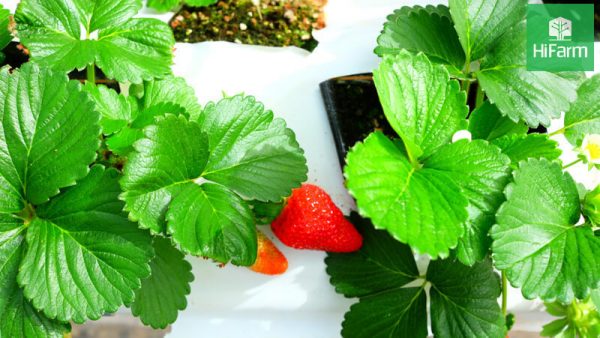
Advantages:
- There’s no environmental affection for plants, such as high temperature in summer or being crushed due to heavy rains.
- Farmers can take the initiative in taking care of plants.
- Greenhouses shield plants from pests, harmful insects, termites, weevils, …
- Provide clean and fresh vegetables due not to use too much pesticide.
- Greenhouse with dome design provides enough light.
Disadvantages:
- Greenhouse’s small acreage (500 – 1000m2) leads to the rotational crops, which makes it’s hard to plant various types of vegetables at the same time.
- Expensive cost and requires many small details such as iron frames, glass panels, irrigation systems, … Therefore, we should carefully calculate and choose materials to save costs when constructing and installing.
- The temperature difference between the inner and outer is quite high, up to 4-5°C will cause wilting and crop death unless we adjust properly.
Why humidity –temperature control is important?
When humidity or the temperature is too high or too low, it will cause stress and weak resistance for plants. These are favorable conditions for pests and diseases to attack. Well controlled temperature and humidity will support:
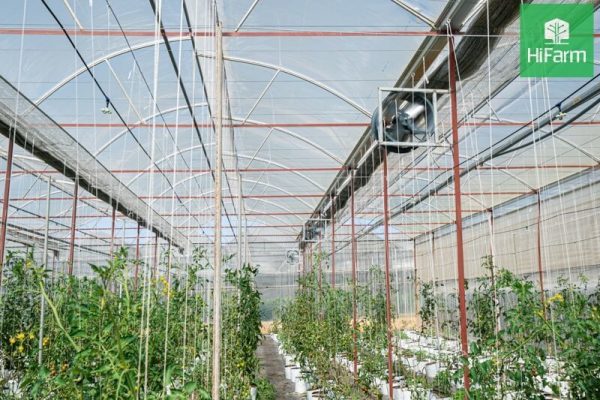
- Increase crop yield
- Increase the rate of steam evaporation to absorb nutrients, helping to improve product quality.
- Increase the ability to control plants according to the growth cycle.
Therefore, it’s important for the plant to be nourished in a suitable habitat, which is also known as microclimate environment (microclimate).
Humidity – temperature control
Temperature
Heating, ventilation grilles, and fans are all allies of temperature control even in a greenhouse designed to absorb light strongly. Although it’s very cold and cloudy outside, heater is still needed to keep the plant growing strongly.
- Summer season: temperature range from 24° to 29° during the day and 16° to 24°C at night.
- In cloudy days, plants don’t produce sugar as much as usual. Therefore, temperature range should be slightly lower.
- Winter: temperatures can be as low as 7 ° C at night without causing damage to leafy crops and should not be lower than 18 ° to 21 ° C during daytime.
- Spring plants require different temperatures. Pl
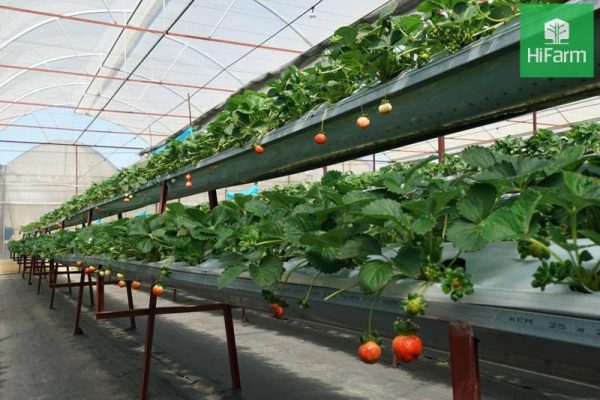
You should study about temperature requirement of plants before setting up greenhouse and warm system in order to meet their warming demand
How does temperature affect plants?
Temperature affects directly to photosynthesis, respiration, evaporation, nutrient and water absorption.
Speed of these processes will increase when temperature increases. On the other hand, responses to temperature effect depend on each kind of plant. For example, with the same temperature effect, cotton and potato will have different growth level (thermophilic plants and cold-loving plants)
Temperature also affects the activity of microorganisms in the soil. Low temperatures inhibit the activity of nitrifying bacteria. pH can also decrease when the temperature is high, due to high activity of microorganisms. Soil temperature also affects water and nutrient absorption of plants.
=>> To sum up, temperature plays a very important role in plant growth. In the past, farmers used to rely on their knowledge and inherent experience to adjust the temperature of crops, … But HiFarm has agricultural technology solutions to help farmers save time…
Humidity
When soil humidity is too high or too low, water supply capacity and plant growth is limited. We can control the humidity through irrigation method. Adequate moisture will improve nutrient absorption and fertilizing efficiency.
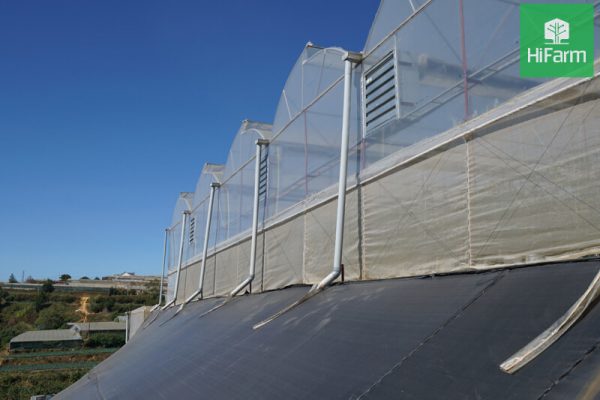
In the stage of vigorous growth, the relative humidity should be 70-85%. From 90% to 95%, the plant will grow weakly and face with fungal diseases. We can reduce humidity by ventilating or absorbing moist air by fan and only watering when necessary. In arid climates, it is possible to increase humidity in greenhouses by spraying water on floors.
Controlling the relative humidity of greenhouse air is not easy, but its effects can be regulated by keeping air moving in the canopy or even in the whole greenhouse structure. If plants do not grow healthy in the stagnant air you will need to keep the greenhouse air moving during the day.
Light
We often think that light is only need for photosynthesis. This is true but not enough. The sunlight also affects the growth and development of plants in many ways
Plants can live without soil, but light and water are always two indispensable factors. Nowadays, humans are able to create artificial light from lamps with the right spectrum to replace natural sunlight.
However, whether you planting with sunlight or artificial one, you still better learn about light for the best plant growth.
Controlling greenhouse environment methods
There are many methods to control the environment in a greenhouse including fan system, ventilation, wet walls, shade net, radiant heat and spray.
Fan
There are two types of fans used to ensure consistent movement of the greenhouse air. The first is the Horizontal Air Flow (HAF), which is mounted on the roof and sides of the greenhouse. HAF increases the heat uniformity inside the house with low costs, helping plants grow similarly. The second is the exhaust fan. Exhaust fans cool the greenhouse by drawing air from the outside and exchanging it with the air inside so as to cooler and decrease moisture.
Mist spraying system:
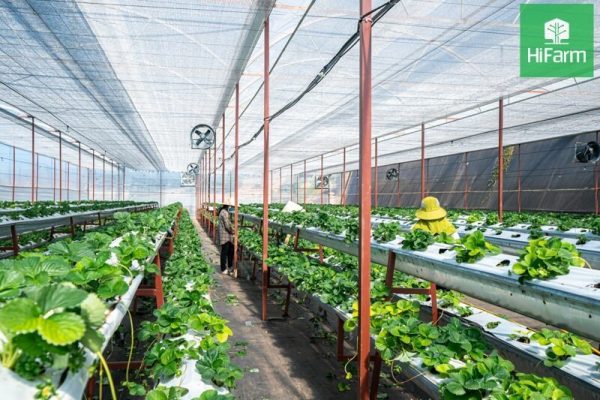
Planting in a greenhouse makes you well control the environment, increase crops and protects plants from frosty and drought. However, farmers must have knowledge and apply hi-technology flexibly in farming.
There are two benefits of misting system that are cooling and humidity control. Plants will be grown and developed according to planned stages in fresh air.
Not only mist spraying, this system can also spray fertilizers and other pesticides to avoid the risk of pests and diseases.
Thanks to its dust-stamping advantages, the cooling misting system will create micro mist particles that prevent dust in the air by dragging them to the ground. In addition, they will wash away all dirt when clinging to the trunk and leaves. Your plants are always washed naturally.
The mist spraying system is considered an effective solution. It both helps save costs and labor in farming.
=>> Compared with traditional manual spray methods, the mist spraying system shows its superiority with comparable or even more efficient performance. It satisfies immediately the needs of watering, cooling, and humidifying in greenhouses. Tiny dewdrops fall down in the exact area which need to be irrigated and make uniform, precisely distributed effect for every square meter of the greenhouse.

 Tiếng Việt
Tiếng Việt